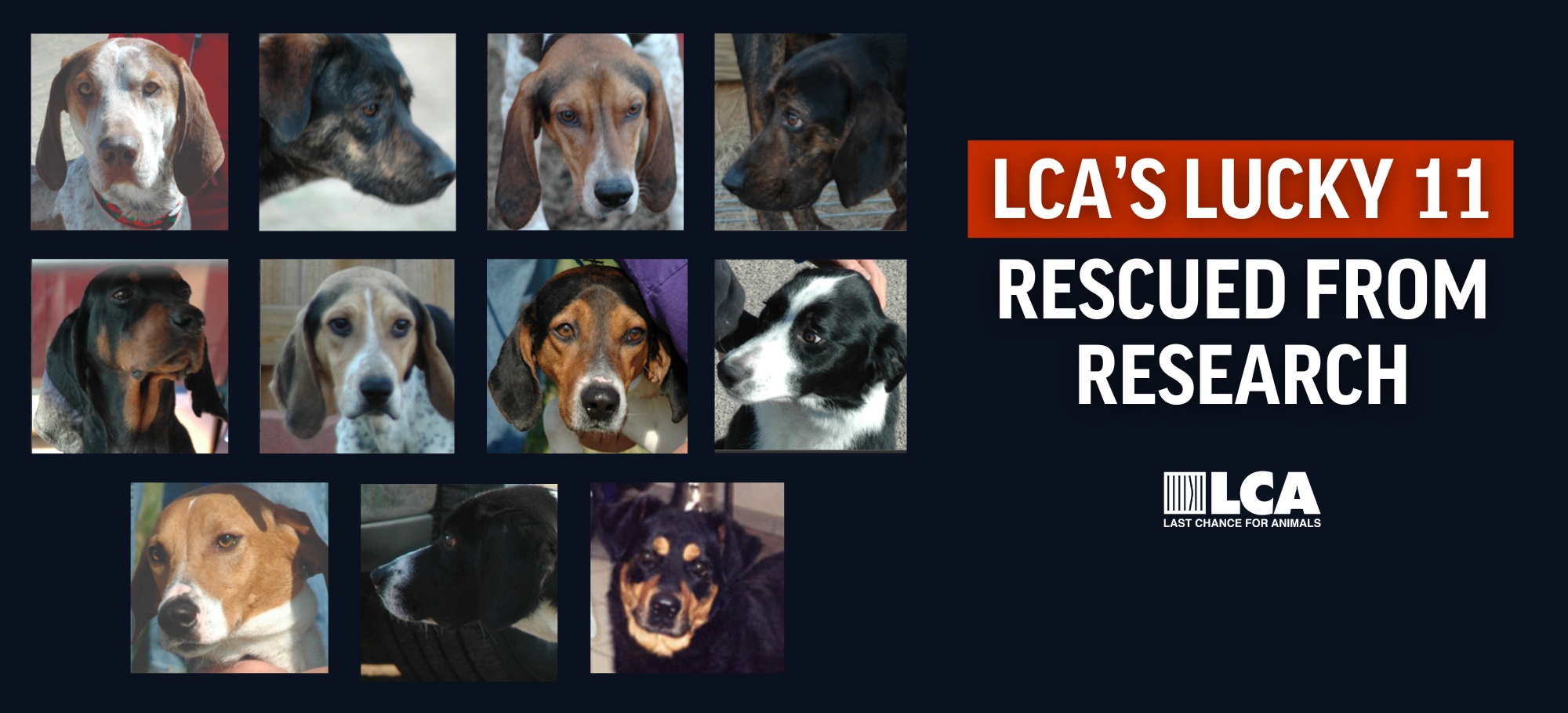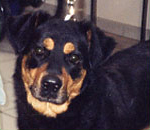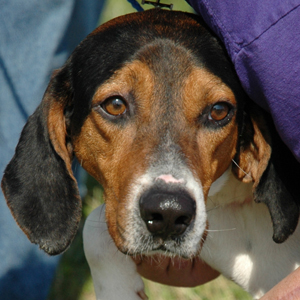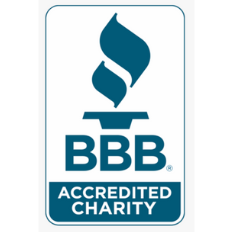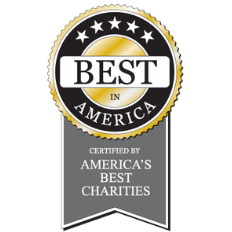LCA'S LUCKY 11 - RESCUED FROM RESEARCH
Animals are seldom released from research facilities. They either live in one for their entire life, are transferred between animal dealers and research facilities, or die during or from the research study. The Lucky 11 beat the odds and were rescued. Read the amazing story.
In 2008, LCA had been working closely for nearly a year with an operative inside a research facility when, finally, word came that the facility was considering releasing a group of dogs. Kim (not her real name), our inside person, had seen the HBO documentary, “Dealing Dogs,” about LCA’s undercover investigation of the notorious Class B dealer C.C. Baird, and contacted our office.
Wound Study
Several months into the investigation, Kim saw a group of male dogs come in from a Class B dealer. They were part of a wound study in which the researcher made eight small incisions on the back of each dog and then monitored the healing process. The study was “non-invasive,” meaning the dogs would most likely recover. Kim had seen many, many Class B dogs come into the facility and then go on to another research study, be sold to another research facility, or be euthanized. Having witnessed the suffering and death of so many other dogs, Kim was determined to save this group.
Kim secretly named a couple of the dogs, something she had never let herself do before (since although it may seem heartless, personalizing an animal can make it almost impossible to follow through with an undercover investigation).
Kim also noted that two of the dogs knew common commands such as “sit” and “down” – which convinced her they were companion animals who were either stolen from their backyards or seized from local animal shelters, both common practices in the world of Class B dog dealers. Seven of the dogs were Beagle/Hound mixes, two were Mountain Curs, one was a Doberman mix and one was a Border Collie.
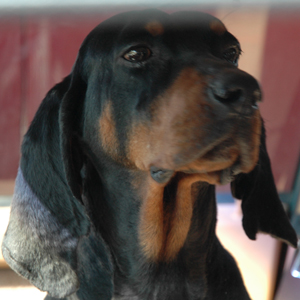 DumboNegotiations
DumboNegotiations
Kim began negotiations with the facility to release the dogs for adoption, while being careful not to blow her cover as an animal rights activist. The facility had never considered adoption before. Their dogs were euthanized or sold if they were deemed of no further “value.” The administrators could not understand why anyone would want to adopt these dogs. It was during this period that LCA received the first photographs of the dogs in their kennels.
The call came on a Tuesday. The facility agreed to release the dogs the following weekend. But there was a caveat, the administration would only release the dogs if no other research facility wanted them. The administration advertised they had Class B dogs available for purchase and if no one wanted them, then they would be released.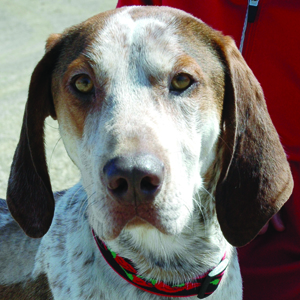 Ronald
Ronald
LCA rented two vans to transport the dogs to safety. We had already contacted one of the rescue organizations that worked with us on the release of the C.C. Baird dogs. The rescue was experienced in dealing with the emotional complications that come with dogs who have suffered at the hands of Class B dealers and research facilities.
On Friday afternoon, still uncertain if the dogs would be released, LCA’s unmarked vans arrived to meet Kim in a parking lot near the research facility.
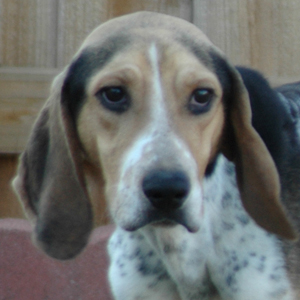 GordonThe call
GordonThe call
Moments after our rescue vans pulled up, Kim’s cell phone rang. The news was good; the facility agreed to release the dogs. The dogs began exiting the facility and being walked out to the parking lot.
The dogs sniffed the air, and looked up at the sky, and turned to look at every noise they heard. It was obvious some of these dogs had never been outside a building before. They were excited and happy. Each dog was malnourished with backbones and rib cages showing, all with their backs shaved and eight identical wounds from the last research they were part of.
Ronald was the first one who was released (and the first dog Kim had named). He was a 6-7 year old red tick hound that immediately gave kisses.
The dogs were loaded into the vans. We had enough traveling kennels for all the dogs, except for one. We decided that Ronald would ride with Kim in the passenger seat of the van. It was only fitting. He was our mascot.
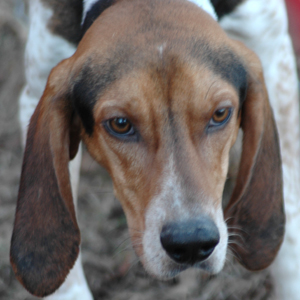 NibblerTwo vans, four people, eleven dogs
NibblerTwo vans, four people, eleven dogs
Two vans, four people, and the Lucky Eleven drove eight hours through the night to the rescue organization that was waiting for us to arrive. The entire time, as we drove in the dark across state borders, the dogs slept in their crates – feeling warm and secure for the first time in ages. For the entire journey, there was not a sound heard or a movement felt in either van. The LCA crew checked on them continuously to make sure they were still breathing. The dogs knew they were with people that meant them no harm.
We arrived at the rescue facility at the crack of dawn. Our LCA staff observed, as the rescue staff leapt into action, immediately examining each of the dogs, one by one. Louie
Louie
Wanda
Wanda, the woman who runs the facility – and who is truly “The Dog Whisperer of the Midwest” – went up to each dog, wrapped her body around him, and checked for ailments. Meanwhile, we began to name the dogs, except for the few that Kim had already named.
There is 6 year old Gordon, who was Ronald’s litter mate. There is Remus, who has open-air issues and is 5 years old. There is 4 year old Winston, who is afraid and aggressive. There is Omega, Remus’ friend, with a wound on his tail. And there is Dumbo, who has a swollen eye that could be from diabetes.
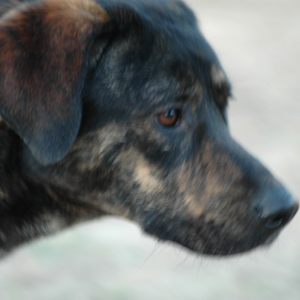 GeorgeAs we continued to select names and watch the dogs get examined, tears welled in our eyes.
GeorgeAs we continued to select names and watch the dogs get examined, tears welled in our eyes.
Wanda was gentle and loving with the dogs and the dogs knew their lives had changed forever – they looked directly into her eyes, and they listened.
All the dogs had ear mites, were malnourished and had various other ailments. One dog was so emotionally and physically damaged that Wanda didn't think he would have lasted another two weeks. He was named Nevel. Nevel
Nevel
Many of the dogs had “kennel legs,” a condition that stems from living in a kennel and not learning how to walk in open spaces. These dogs had trouble walking and did not trust the ground they were standing on. A few other dogs, just like poor Remus, had a fear of the outside – cowering from the very air they were breathing. All the dogs have behavioral issues from a lifetime in and out of research and Class B dealer facilities.
A new crate, a blanket, a toy, and a treat
Each of the Lucky 11 were put in a new crate and given a blanket, a toy, and a treat. Some of them were already beginning to play with their toy while others cowered. Louie, 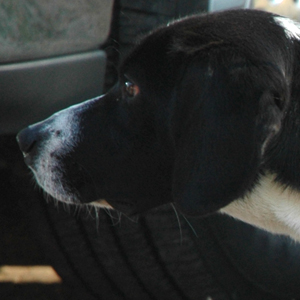 Fredthe Border Collie, played with his toy immediately, a sure sign that he was a companion animal. Wanda determined that three of the dogs had been companion animals at one time as she saw in their eyes that they were searching for their guardian.
Fredthe Border Collie, played with his toy immediately, a sure sign that he was a companion animal. Wanda determined that three of the dogs had been companion animals at one time as she saw in their eyes that they were searching for their guardian.
After the dogs were all settled, it was time for the LCA crew and Kim to leave. Everyone cried as they drove away, knowing that the Lucky 11 were finally safe from harm.
HOW YOU CAN HELP PROTECT ANIMALS
- Keep your pet safe by identifying your pet with ID tags, or microchips.
- Spay and neuter your pet.
- Refuse to buy products that are tested on animals.
- Ask your government to stop wasting billions of dollars each year on animal experiments. (U.S. elected officials' contact information can be found at www.votesmart.org.)
LEARN MORE ABOUT VIVISECTION / ANIMAL RESEARCH.
WATCH THE HBO DOCUMENTARY "DEALING DOGS" ON LCA'S YOUTUBE CHANNEL.

